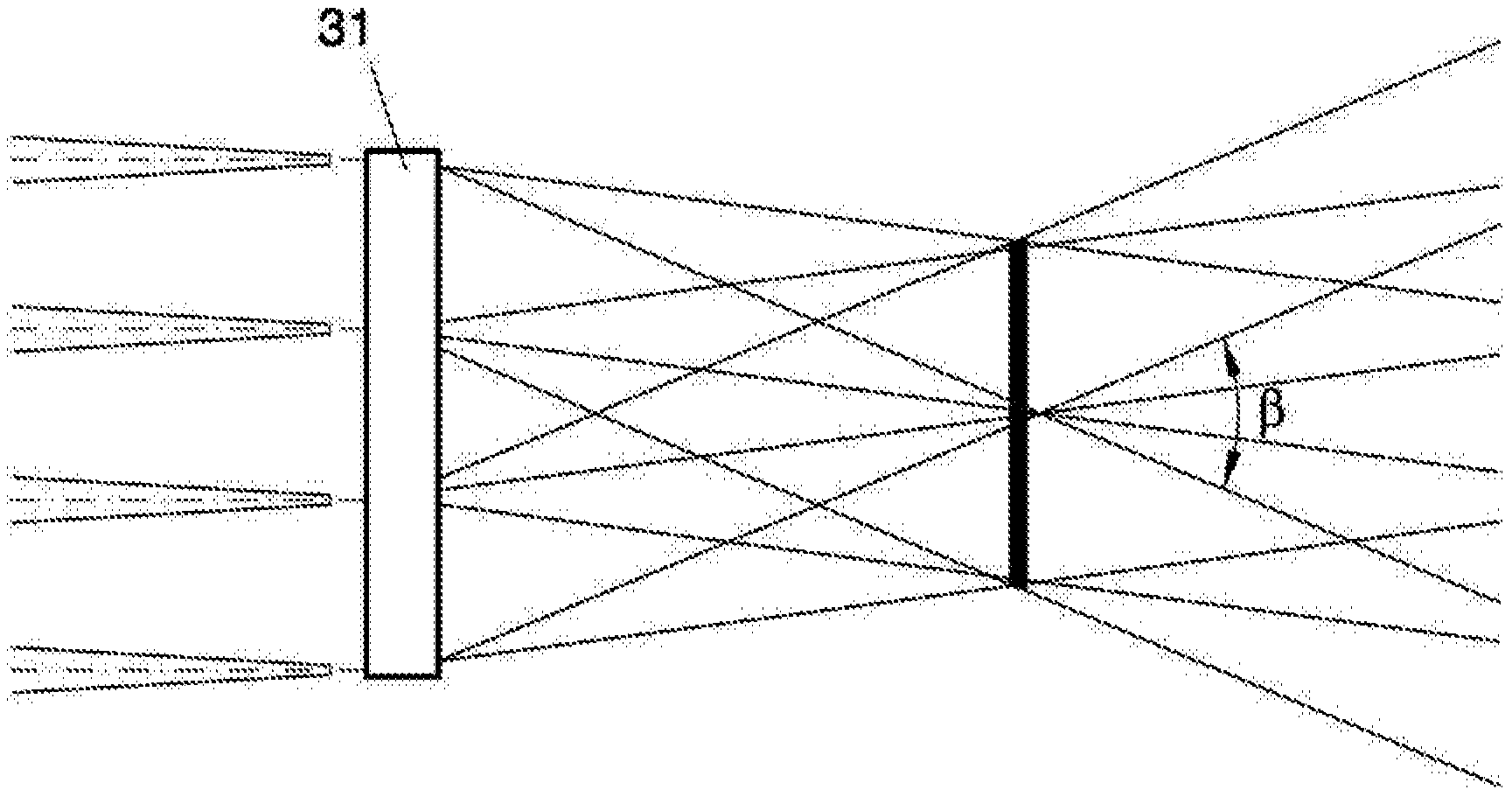Solar plant
A solar device, a technology of solar energy, applied in the field of solar energy, can solve the problems of not having a preferred direction, not allowing efficient optical concentration, etc.
- Summary
- Abstract
- Description
- Claims
- Application Information
AI Technical Summary
Problems solved by technology
Method used
Image
Examples
Embodiment Construction
[0088] Below are the attached drawings 1 to Figure 6 A description of the recommendation model of the present invention with the help of .
[0089] Recommended Model 1
[0090] The invention as shown in the accompanying drawings refers to a method for obtaining energy (20) from solar radiation under optimal utilization of the solar spectrum (cf. Figure 5 ) solar installations.
[0091] Such as Figure 1a As can be seen in , the beam generated by the first lens-type concentrator device (31) has some divergence. The divergence associated with these first concentrator means (31) is linked to the degree of concentration achieved. The greater the concentration attempted, the more divergent the output beam will be. This phenomenon is explained by the etendue conservation theorem. In a three-dimensional system, n 2 ·A·sen 2 (β / 2)=cte, where n is the refractive index of the medium, A is the area of the element belonging to the first concentrating means (31) where concentrat...
PUM
 Login to View More
Login to View More Abstract
Description
Claims
Application Information
 Login to View More
Login to View More - R&D
- Intellectual Property
- Life Sciences
- Materials
- Tech Scout
- Unparalleled Data Quality
- Higher Quality Content
- 60% Fewer Hallucinations
Browse by: Latest US Patents, China's latest patents, Technical Efficacy Thesaurus, Application Domain, Technology Topic, Popular Technical Reports.
© 2025 PatSnap. All rights reserved.Legal|Privacy policy|Modern Slavery Act Transparency Statement|Sitemap|About US| Contact US: help@patsnap.com



